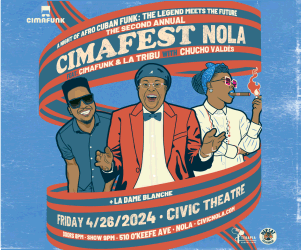New Orleans still doesn’t have its music museum. Over the weekend the Times-Pic reported that a 26,000-square foot space that’s literally within the Saenger Theatre redevelopment on Canal Street is undergoing some backlash from some of New Orleans City Councilmembers. The space, which used to be the LaSalle Hotel was acquired by the same developers who redid space at 200 Carondelet Street as low-income housing.
The city has been trying to revamp Canal Street, with the convergence of the Krauss Building, the Joy Theater, the Saenger Theatre, and the Loew’s State Theater at Canal and Basin Street being the main focus. This intersection will also contain the crossroads of two streetcar lines.
For years, the Downtown Development District has been attempting to rehabilitate Canal Street, and the emergence of an theater district at this locations would be ideal. But the developers (whose property at 200 Carondelet has received criticism on safety issues) instead chose to focus on low income housing.
There is no better use for the LaSalle property than a museum that focuses on New Orleans music and culture. It would be a pity and a shame if the old LaSalle Hotel became another low income space, purely because there are developers who can flip the property. It’s not good for the city; it’s not good for Canal Street.

The Little Gem Saloon
On the other hand, the area on South Rampart Street that’s known for its affiliation to early jazz, particularly to Louis Armstrong, is seeing some serious development. By mid-January, the Little Gem Saloon at the corner of Poydras and South Rampart will be open (soft opening was last weekend) and the Little Gem will bring jazz back to South Rampart.
The property is being developed by a group headed by Dr. Nicolas Bazan, and will contain a 190-seat restaurant downstairs and will accommodate up to 250 upstairs. Music-lovers will be able to sit at tables, enjoy beverages and also be able to order food from the Little Gem’s limited menu while they enjoy the music. The venue has an elevator for the second floor music room.
Adam Shipley, who has been a talent buyer for the House of Blues Orlando, Tipitina’s, and has also worked for Preservation Hall has been named music director. “We’ll have live music upstairs from Wednesday to Saturday every week. Doors will open at 9 p.m., and there will two sets, with the last one ending about 1 a.m., “ said Shipley. “We are also hosting a Brass Band Brunch every Sunday from 10 a.m. to 3 p.m., and a no-cover ‘B3 Happy Hour’ downstairs from 4 p.m. to 7 p.m. every weekday. We want to do music like Jimmy Smith, and we plan on featuring a local great playing B3 with various guests on drums, sax, and guitar. Our very first resident will be David Torkanowsky.”
The first week at Little Gem Saloon will feature Meschiya Lake and the Little Big Horns on January 11.
“We’re excited to be able to bring local music, especially jazz, back to the Little Gem,” said Shipley. We also plan on featuring a lot of different types of local musicians, not just jazz players. We also hope to get some touring acts as well.”
The other historic jazz buildings in the 400 block of South Rampart nearby— the Iroquois Theater (where Armstrong as a young boy won a talent show); the Eagle Saloon (where Buddy Bolden performed); and the Karnofsky Tailor Shop (where the family Karnofsky family who “adopted” Louis Armstrong worked)—are still moldering.
They are, however, part of a project that’s been in the works for a long time that would incorporate the properties in a much larger mixed-use development that would feature entertainment, music and restaurants. All three properties would be renovated and restored.
Reportedly, an operator is ready to get involved with the project, which needs a developer.
So, jazz is returning to South Rampart, at least more immediately to the Little Gem. Let’s hope that a developer sees the potential of bringing jazz back to South Rampart, and gets involved in a larger development—that hopefully, will include a music museum, a project that is sorely needed in the world’s most musical city.




